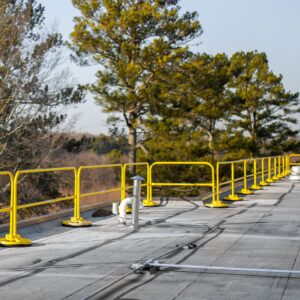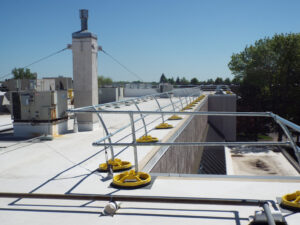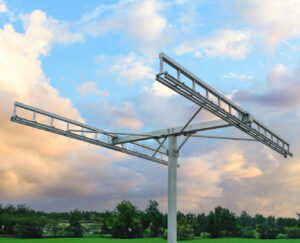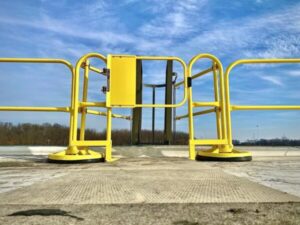OSHA Compliance vs. Cal-OSHA Compliance
DID YOU KNOW THAT CALIFORNIA’S FALL-PROTECTION STANDARDS ARE MORE STRINGENT?
While reviewing your facility’s fall-protection options under federal OSHA compliance, California residents should also be asking themselves: is it Cal-OSHA compliant? The rules between the two regulatory organizations differ, with California demanding more of safety and facility managers with its stricter standards — especially when it comes to guardrail codes.
There are a number of distinctions between OSHA standards and Cal-OSHA standards pertaining to general industry, starting with the height of the top rail. Federal OSHA regulations require the top rail to be placed 42” above the walking surface, allowing a +/-3 vertical tolerance — this means the top rail can be placed anywhere between 39” and 45” above the walking surface (1910.29.b.1). Cal-OSHA, on the other hand, requires the top rail to be positioned at least 41” above the walking surface (3209.a).
The maximum length of a single railing also differs, with federal OSHA standards allowing 10-foot rail length between stanchions versus the 8-foot maximum rail lengths required by Cal-OSHA (3209.c).
Finally, the force requirements are far more stringent under Cal-OSHA regulations than those enforced by federal OSHA standards. Federal guidelines require a single railing length to withstand 200 pounds of pressure (1910.29.b.3). Cal-OSHA instead measures force based on linear foot, requiring 20 pounds of force to be withstood for every linear foot throughout the entire length of the rail system (3209.b).
| FEDERAL OSHA | CAL-OSHA | |
|---|---|---|
| Top Rail Position | 39” to 45” above walking surface | 41” to 46” above walking surface |
| Maximum Single Rail Length | 10 feet | 8 feet |
| Force Requirements | 200 pound point load | 20 pounds per linear foot along entire rail system |
The bottom line is that California facility and safety managers need to remain vigilant — just because a fall-protection system is compliant with federal OSHA guidelines does not make it Cal-OSHA compliant. And the unfortunate truth is that there are a number of guardrail systems in the market that do not comply with the more rigid California standards.
At Safety Rail Company, we pride ourselves on integrity. Our entire purpose is to ensure your facility’s compliance with all applicable regulations, including those in California. We take the time to assess our clients’ needs and engineer a system just for them.
This is why we built the Accu-Fit Cal 3209: a guardrail system designed specifically for California compliance. With the Accu-Fit Cal 3209, there’s no need to worry whether your fall-protection system is compliant: we’ve done that for you, supported with third-party, independent-certified and sealed testing documentation. And, as with most of our fall-protection solutions, the Accu-Fit Cal 3209 is non-penetrating, utilizing low-profile bases that do not require drilling into the roof membrane.
- Federal OSHA Compliance Does Not Always Equal Cal-OSHA Compliance
- Stricter California Regulations Require Higher Top Rail, Shorter Rail Lengths, and Ability to Withstand Tougher Force Standards
- SRC’s Accu-Fit Cal 3209: Built for Heavy-Duty California Compliance and Independently Tested to Meet All Requirements
In the end, it’s important for California residents to remember that federal OSHA compliance is only one piece of the puzzle — Cal-OSHA has their own, more strict set of rules. Be sure to review your fall-protection plan to guarantee it adheres to all regional standards — and please feel free to contact Safety Rail Company for expert advice: we’ll gladly help you craft a site-specific Accu-Fit 3209 system for your California facility!






